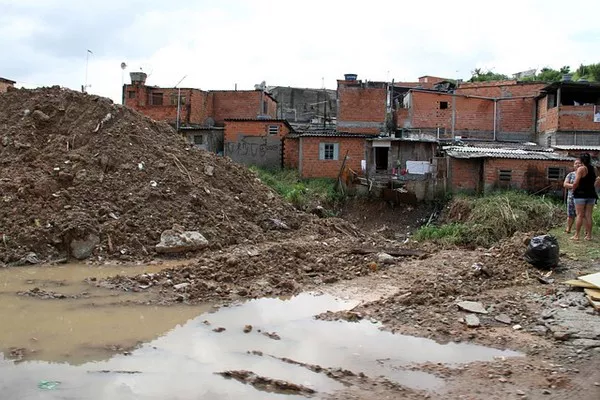Sewage systems are a critical component of modern urban infrastructure, responsible for the safe and efficient disposal of wastewater from homes, businesses, and industries. While the underlying goal remains consistent across all sewage systems, the specific methods and technologies employed can vary significantly. In this article, we will explore the different types of sewage systems commonly used around the world, highlighting their key characteristics, advantages, and limitations.
Combined Sewer Systems
Combined sewer systems, as the name suggests, combine both sanitary sewage and stormwater runoff into a single network of pipes. This type of system was historically popular due to its simplicity and cost-effectiveness. However, it comes with several challenges. During heavy rainfall or storm events, combined sewer systems may become overwhelmed, leading to the release of untreated sewage and pollutants into natural water bodies, creating a risk for environmental contamination and public health. Consequently, many urban areas are transitioning away from combined sewer systems.
Separate Sewer Systems
Separate sewer systems, in contrast to combined systems, have separate pipes for sanitary sewage and stormwater. This separation allows for more effective treatment of sewage, as well as the controlled management of stormwater. While it is an effective approach in reducing pollution, separate systems tend to be more expensive to install and maintain due to the necessity of two distinct networks.
Gravity Sewer Systems
Gravity sewer systems rely on the natural slope of the terrain to transport sewage and wastewater to treatment facilities. These systems are cost-effective and straightforward to design and maintain, as they do not require energy-intensive pumping stations. However, they are only practical in areas with suitable topography, which limits their applicability in flat or hilly regions.
Pressure Sewer Systems
Pressure sewer systems are suitable for areas with challenging terrain or low population density. These systems use pumps to convey sewage and wastewater through pressurized pipes, allowing for more flexibility in routing and distance. While they can overcome topographical limitations, pressure sewer systems tend to be more expensive to install and operate.
Vacuum Sewer Systems
Vacuum sewer systems utilize differential air pressure to transport sewage. Wastewater is collected in small, sealed containers at each property and is then transported to a central collection point via a network of vacuum pipes. Vacuum sewer systems are particularly useful in areas where traditional gravity or pressure systems are impractical. They are relatively cost-effective and can be installed quickly.
Septic Tank Systems
In rural and less densely populated areas, septic tank systems are commonly used. These systems consist of a septic tank and a drain field. The septic tank receives wastewater from the property, where solids settle and are digested, while the liquid portion is discharged into the drain field for further treatment by natural processes. While septic tank systems are simple and cost-effective, proper maintenance is essential to prevent issues like groundwater contamination and system failure.
Package Treatment Plants
Package treatment plants are a compact sewage treatment solution suitable for small communities and remote locations. These pre-fabricated systems typically include various treatment stages such as screening, sedimentation, and biological treatment. Package treatment plants are versatile and can be customized to meet specific needs, making them an attractive option for decentralized wastewater treatment.
Centralized Sewage Treatment Plants
Centralized sewage treatment plants are the backbone of urban sewage management. These large-scale facilities receive sewage from extensive networks of pipelines and use advanced treatment processes to remove contaminants and pathogens. Treated effluent is typically discharged into natural water bodies, while solids are either disposed of or converted into biosolids for various applications. Centralized sewage treatment plants offer efficient and thorough sewage treatment, but they require substantial investment and ongoing maintenance.
Onsite Wastewater Treatment Systems (OWTS)
Onsite wastewater treatment systems, often referred to as OWTS or decentralized systems, are designed to treat sewage directly at the source. These systems can range from simple septic tanks to advanced technologies like aerobic treatment units. OWTS are commonly used in rural and suburban areas where connection to a centralized sewage treatment plant is not feasible. They offer more localized treatment and can be environmentally sustainable when properly designed and maintained.
Sustainable Sewage Systems
Sustainable sewage systems focus on minimizing the environmental impact of sewage disposal. These systems often incorporate technologies such as graywater recycling, green infrastructure, and energy recovery from wastewater. Sustainable sewage systems aim to reduce water consumption, treat sewage more efficiently, and recover valuable resources, making them an important consideration in the context of urban development and resource conservation.
Conclusion
The diverse range of sewage systems available today reflects the unique challenges faced by urban planners, engineers, and environmentalists in managing wastewater. Each type of system has its own set of advantages and limitations, making it crucial to select the most appropriate system based on factors like topography, population density, budget, and environmental concerns. As we continue to address growing urbanization and environmental protection, the evolution of sewage systems will remain a dynamic field, with a growing emphasis on sustainability and innovative technologies to ensure the responsible management of this critical resource.

